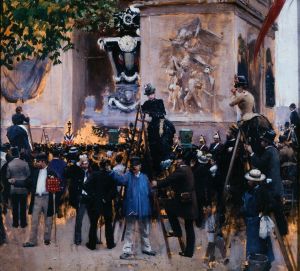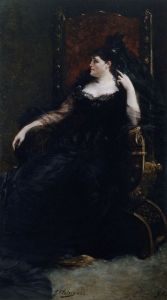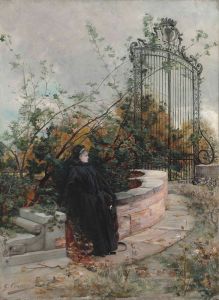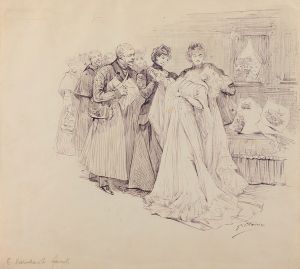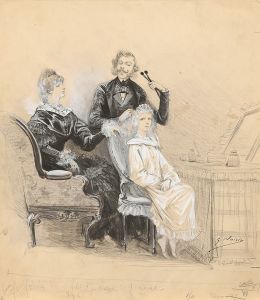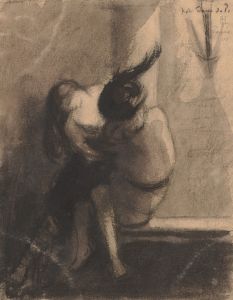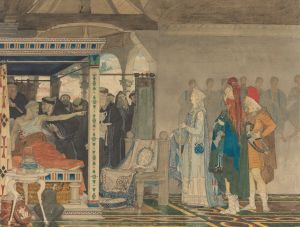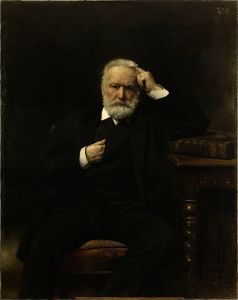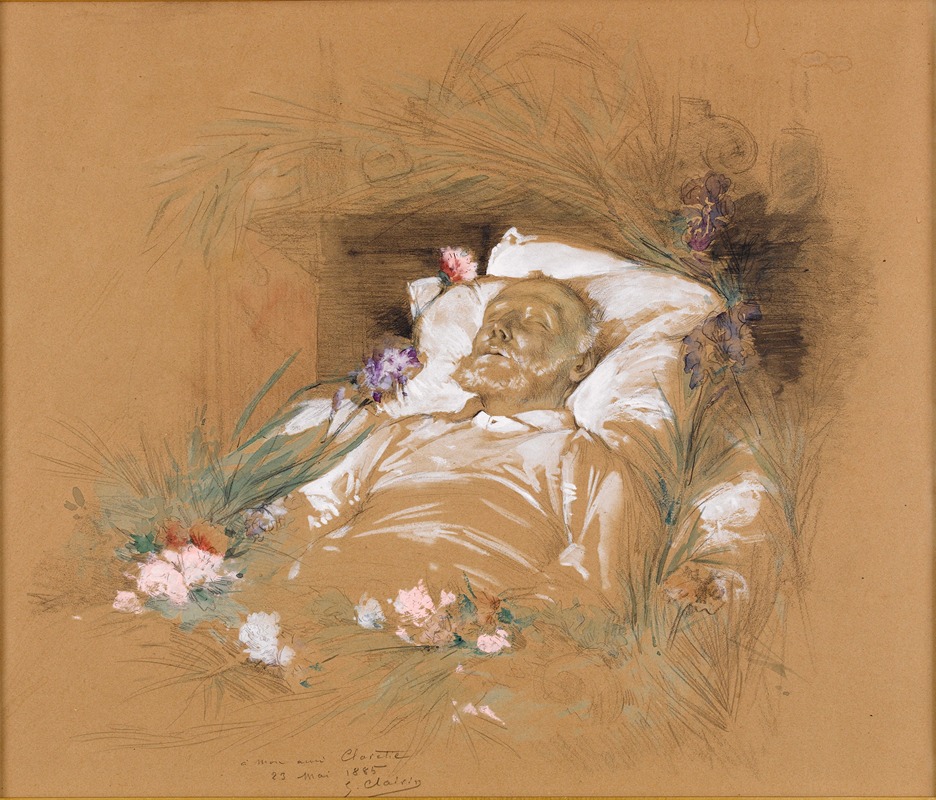
Victor Hugo sur son lit de mort
A hand-painted replica of Georges Jules Victor Clairin’s masterpiece Victor Hugo sur son lit de mort, meticulously crafted by professional artists to capture the true essence of the original. Each piece is created with museum-quality canvas and rare mineral pigments, carefully painted by experienced artists with delicate brushstrokes and rich, layered colors to perfectly recreate the texture of the original artwork. Unlike machine-printed reproductions, this hand-painted version brings the painting to life, infused with the artist’s emotions and skill in every stroke. Whether for personal collection or home decoration, it instantly elevates the artistic atmosphere of any space.
"Victor Hugo sur son lit de mort" is a painting by the French artist Georges Jules Victor Clairin, created in 1885. This artwork captures the poignant scene of the renowned French writer Victor Hugo on his deathbed. Clairin, known for his portraits and historical scenes, was a contemporary of Hugo and had the opportunity to depict the final moments of one of France's most celebrated literary figures.
Victor Hugo, born in 1802, was a leading figure in the Romantic movement and is best known for his novels "Les Misérables" and "The Hunchback of Notre-Dame." His work had a profound impact on French literature and culture, and he was also a prominent political figure, advocating for social justice and democracy. Hugo's death on May 22, 1885, marked the end of an era, and his passing was a significant national event in France.
The painting by Clairin is notable for its somber and respectful portrayal of Hugo. It reflects the deep admiration and reverence that the French people held for him. The composition of the painting is intimate, focusing closely on Hugo's face and upper body as he lies in repose. The artist uses a subdued color palette, which adds to the solemn and reflective mood of the piece.
Clairin's choice to depict Hugo on his deathbed is significant, as it captures the transition from life to legacy. The painting serves as a tribute to Hugo's enduring influence and the impact of his work on future generations. It also reflects the 19th-century tradition of commemorating notable figures through deathbed portraits, a practice that sought to honor their contributions and preserve their memory.
The public reaction to Hugo's death was immense, with millions of people participating in his funeral procession in Paris. He was buried in the Panthéon, a mausoleum in Paris that houses the remains of distinguished French citizens. This event underscored Hugo's status as a national icon and his lasting legacy in French history.
Georges Clairin, the artist, was born in 1843 and studied at the École des Beaux-Arts in Paris. He was a prolific painter, known for his portraits of celebrities and his depictions of theatrical and exotic scenes. Clairin's work was well-regarded during his lifetime, and he exhibited regularly at the Paris Salon.
"Victor Hugo sur son lit de mort" is an important work within Clairin's oeuvre, as it captures a moment of historical significance and reflects the artist's skill in portraiture. The painting remains a testament to Victor Hugo's enduring influence and the deep respect he commanded in his lifetime and beyond.






